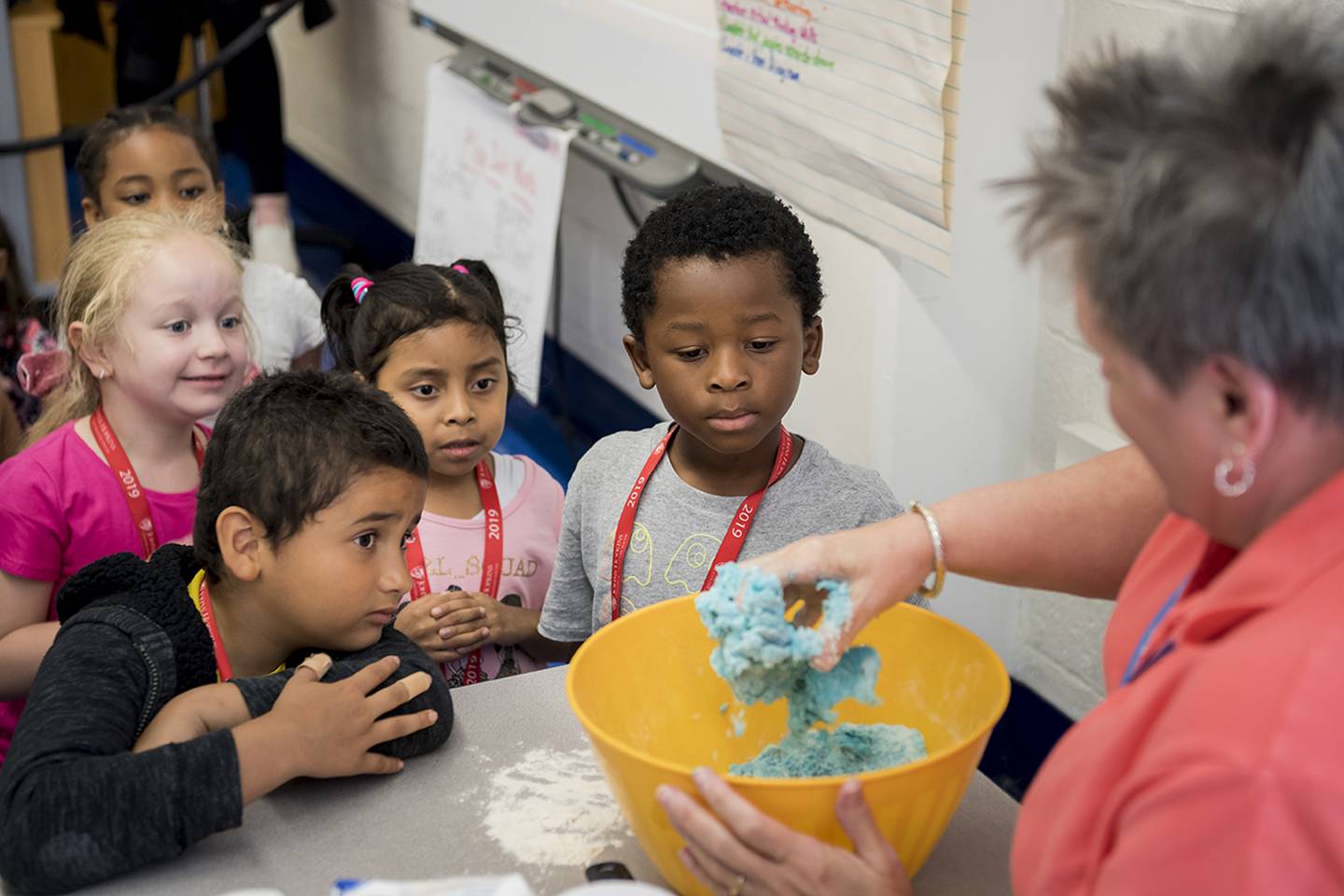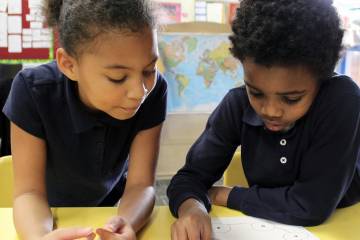It's the middle of summer at Baltimore's Commodore John Rodgers Elementary/Middle School, and Theresa Iwancio's classroom is full of first-graders huddled around a big yellow mixing bowl.
"What do you think will happen if we add more water?" Iwancio asks. "Will it feel squishier?"
"Yeah!" the students cheer.
The teacher pours a tiny bit of water into the mixture and the students examine the lump of bright blue dough with their hands. "Feels like slime!" someone yells.
They decide to add more flour.
"Does it still feel like slime?" Iwancio asks.
"No!" they cheer. They examine their fingers, which are now caked in blue dough. "It feels like Play Doh!"
Is school allowed to be this fun?
It is when you're learning to make your own puzzles and Play Doh, read the Periodic Table, write binary code, test the pH levels in liquids, and invent your own superhero. That's how more than 180 Baltimore City Public Schools students are spending six weeks this summer as part of the Johns Hopkins Center for Talented Youth's new CTY Baltimore Emerging Scholars Summer Program.
Made possible through a $400,000 Learning in Extended Academic Program grant from the Maryland State Department of Education, the free program offers small, interdisciplinary courses like Toyology, Number Sense, Science Spoilers, and Behind the Mask: Superheroes Revealed to Baltimore City Public Schools students in grades 1-3.

Image caption: Students participating in the CTY Baltimore Emerging Scholars Summer Program add household ingredients together to make Play Doh during their Toyology class at Commodore John Rodgers Elementary/Middle School.
Image credit: Howard Korn
The program's purpose is bridging the excellence gap—helping lower-income students reach top levels of academic performance by building their critical-thinking and problem-solving skills through fun lessons and hands-on activities. CTY is offering the program at Gwynns Falls Elementary School in addition to Commodore John Rodgers this summer. It includes yoga, sports, and arts and crafts for students, as well as weekly workshops for parents about supporting bright kids' social and emotional needs.
"Many of these kids are from low-income neighborhoods, meaning they have the least likelihood of being identified for advanced programming in their schools," said Amy Shelton, CTY's interim executive director and director of research. "They haven't been identified as 'advanced' or 'gifted'—but we think our program can help them reach that level."
The free summer program builds on a growing partnership between Baltimore City schools and CTY, which started in 2014 with the free, 25-week, school-based CTY Baltimore Emerging Scholars Program, dedicated to identifying bright Baltimore City elementary students and developing their academic talents. It has grown from two schools in 2014 to 16 schools reaching 500 second-, third-, and fourth-graders today.
Once students complete the CTY summer program, their academic performance will be measured to determine its impact. In the meantime, it's clear they are spending their summer staying engaged and excited about learning.
Salaura Rose Plitt, a second-grader taking Behind the Mask: Superheroes Revealed, chatted excitedly about the superhero she had created: "She is 11 years old and she's a fish and she lives in the ocean," Salaura said. "Her job is to blow bubbles to protect all the creatures under the sea. Her whole outfit is blue, but she has white wings that help her fly."
Third-grader Rachel Jenkins was happy to be solving puzzles, learning algorithms, and counting by multiples in her Number Sense class.
"It's exciting because I get to be inside the school again and learning—even though it's summertime," she said.
Posted in University News, Community
Tagged community, center for talented youth, baltimore city public schools









